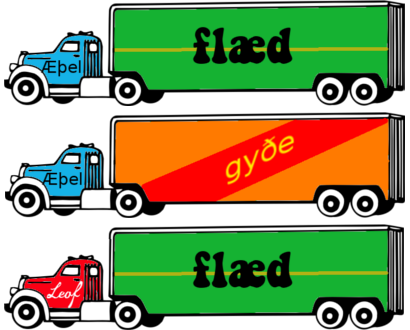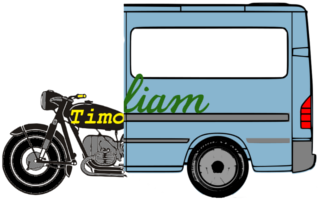 This work is
licensed under a Creative
Commons Attribution 4.0 International License.
This work is
licensed under a Creative
Commons Attribution 4.0 International License.
Dithematic names are like semi-detached tractor-trailers: each one is composed of two parts that can work together or with different, similar elements.

The "tractor" in this analogy is a prototheme, and the "trailer" a deuterotheme. These are two separate pools of elements, and are not interchangeable (though in some languages certain elements may be found in both pools). You need one of each, and in the right order, to make a functional name.

Of course, not every tractor works with every trailer. They might use different couplers, or the trailer might be too heavy for the tractor to haul. Similarly, a prototheme might never be used with a specific deuterotheme because they're exclusive to different subgroups, because native speakers of the language think they sound bad together, or for any number of other—often ephemeral—reasons.
It's also important to remember that not every name is dithematic, even in cultures that use dithematic names, and that most cultures dont use them at all. So hacking two random names in half and jamming the pieces together won't automatically give you a new name that works.

If you're interested in constructing a plausible dithematic name for use in the S.C.A, there are a few steps you need to take:
This page was written and is maintained by Coblaith Muimnech, who created and owns the copyright to all portions not attributed to others. Click to visit her homepage or the index to her names articles.
 This work is
licensed under a Creative
Commons Attribution 4.0 International License.
This work is
licensed under a Creative
Commons Attribution 4.0 International License.
Images on this page were constructed using clipart of a tractor-trailer, a van, and a motorcycle from Open Clipart.